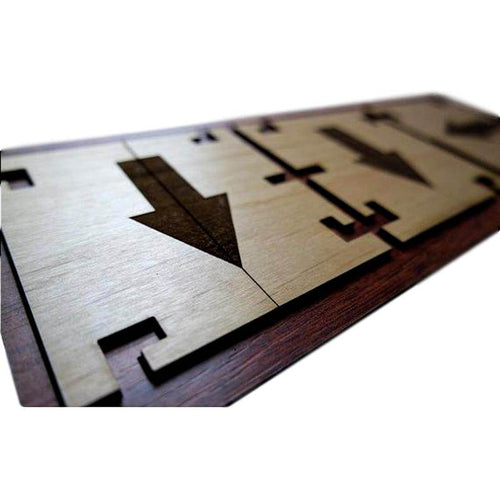Escape Room Terminology: Unveiling the Secrets Behind the Thrills
In our escape room dictionary, we'll delve deep into the lexicon of escape room terminology, shedding light on the fascinating elements that make each adventure unique.
From deciphering anagrams to unlocking combination locks, our comprehensive dictionary will equip you with the knowledge needed to conquer any escape room challenge.
Whether you're a seasoned escape room enthusiast or a curious beginner, this guide is your compass to navigate through the intricacies of puzzles, clues, and narratives.
Join us as we demystify the language of escape rooms and empower you to embark on unforgettable quests full of excitement, mystery, and fun.
So, buckle up and prepare to explore the fascinating world of escape room terminology. Let's dive in and uncover the secrets behind the thrills!
Quick Links:
A | B | C | D | E | F | G | H | I | J | K | L | M | N | O | P | Q | R | S | T | U | V | W | X | Y | Z
A
- Anagram: A word or phrase that is rearranged to form another word or phrase, often used as a clue or puzzle.
- Automation: Mechanisms or devices that trigger actions or reveal clues when specific conditions are met.
B
- Black Light: A type of ultraviolet (UV) light used to reveal hidden messages or objects that are only visible under UV light.
- Braille: A tactile writing system used by individuals with visual impairments, often employed for providing accessible clues and information.
C
- Cipher: A code or secret writing system used to encrypt messages or clues.
- Clue: A hint or piece of information provided to players to help them solve a puzzle or progress in the game.
- Combo Lock: A type of lock that requires a specific sequence of numbers or symbols to open.
- Combination Lock: A lock that requires a specific sequence of numbers to be aligned correctly to open.
- Direction Lock: A type of lock where players need to follow a specific order of directions (e.g., left, right, up) to open.
D
- Decryption: The process of converting an encoded or encrypted message back into its original form.
- Decoder Disk: A circular device used to decipher codes, often with rotating elements to match symbols.
E
- Enigma Machine: A historical encryption device used for secure communication, often recreated as a puzzle or challenge in escape rooms.
- Escape Room Theme: The overarching storyline, setting, and atmosphere that provide context for the puzzles and challenges in an escape room.
F
- Flashlight: A handheld light source that players may use to search for clues in dark or hidden areas.
- Gadget: A mechanical or electronic device used in escape rooms to trigger actions or reveal clues.
- Generation Puzzle: A puzzle that requires players to follow specific steps to create or generate a solution.
I
- Inventory: The collection of items or clues that players have discovered and are actively using to solve puzzles.
J
- Jigsaw Puzzle: A puzzle made of various interlocking pieces that need to be assembled to form a complete picture or solution.
K
- Key: An item or piece of information that helps unlock a lock, container, or door.
- Key Maze: A puzzle where players must navigate through a maze using a physical key or other mechanism.
L
- Logic Puzzle: A puzzle that requires deductive reasoning and logical thinking to solve.
M
- Meta Puzzle: A puzzle that involves solving multiple smaller puzzles to uncover a final solution.
- Morse Code: A communication system using dots and dashes, often used as a puzzle element.
N
- Narrative: The story or theme that guides the overall experience and challenges in the escape room.
O
- Obstacle: A challenge or barrier that players must overcome to progress in the game.
P
- Padlock: A type of lock that requires a physical key or combination to open.
- Puzzle: A problem or challenge that players must solve to progress in the game.
- Puzzle Generation: The process of creating new puzzles for escape rooms, often using algorithms or creative techniques.
Q
- QR Code: A type of two-dimensional barcode that players may scan to access digital clues or information.
R
- Red Herring: A misleading clue or piece of information that does not actually contribute to solving the puzzles.
- Riddles: Puzzles that pose a question or problem that players must solve by thinking creatively.
S
- Secret Compartment: A hidden space that players may uncover to find items or clues.
- Sliding Puzzle: A puzzle where players must rearrange pieces on a grid to form a complete image or pattern.
- Sudoku: A number puzzle that requires filling a grid with numbers based on certain rules.
- Survival Horror: An escape room theme that involves elements of horror, fear, and survival challenges.
T
- Timer: A device or display that counts down the remaining time players have to escape.
U
- UV Light: See "Black Light."
V
- Visual Puzzle: A puzzle that relies on images, patterns, or visual cues to be solved.
W
- Word Search: A puzzle where players must locate hidden words within a grid of letters.
- Wire Puzzle: A physical puzzle made from interconnected metal pieces that players need to manipulate to solve.
X
- X Marks the Spot: A puzzle or clue that indicates a specific location players need to find.
Y
- Yellowing Puzzle: A puzzle that involves deciphering clues or patterns from aged or discolored materials.
Z
-->


0 comments